- Home
- Forums
- Mount & Blade: Warband
- The Forge - Mod Development
- The Caravanserai - Released Mods
- Warband
- The Cellar - Older Warband Mods
- Europe 1200 [S]
You are using an out of date browser. It may not display this or other websites correctly.
You should upgrade or use an alternative browser.
You should upgrade or use an alternative browser.
Wallachia/Moldavia
- Thread starter Cod
- Start date
Users who are viewing this thread
Total: 2 (members: 0, guests: 2)
I've thought several times about adding a wallachian subculture (with several settlements) to fill that territorial gap between Transilvania (under Hungary's control) and the Bulgarian Tsardom, as currently it looks like there's some kind of empty region there, and that wasn't the case in 1200. But in any case what existed there, if I'm not mistaken, were small banates under control by the Kingdom of Hungary. Considering the Kingdom of Croatia is portrayed as integrated into Hungary (which is not really correct, but the game engine does not allow for a single ruler to command two different factions), these banates should be under hungarian rule as well.
So the most we're looking after is a few settlements to fill the Wallachian region, which in any case - again, if I'm not mistaken - was a unstable frontier region under pressure by the cumans around 1200.
So the most we're looking after is a few settlements to fill the Wallachian region, which in any case - again, if I'm not mistaken - was a unstable frontier region under pressure by the cumans around 1200.
kdm
Sergeant

NikeBG said:It wasn't called Cumania for no reason. Still, let's see what Cod will come up with.
Roman(ian) Empire?
Cod
Recruit

Okay guys, so here's what I've came up with:
Wallachia

The vlachs were by knyazes and voivodes:
- the voivodate of Litovoi and Seneslau
- the knyezate of Farcas and John
All of the voivodes and knyazes were mentioned in a diploma issued by king Béla IV of Hungary(1235–1270) on 2 July 1247. The diploma granted territories to the Knights Hospitaller in the Banate of Severin and Cumania, “with the exception of the land of the kenazate of Voivode Litovoi,” which the king leaved to the Vlachs “as they had held it”.
Litovoi, also Litvoy, was a Vlach voivode in the 13th century whose territory comprised northern Oltenia(Romania).
It seems that Litovoi was the most powerful of all the above local rulers. His territories were exempted from the grant to the knights, but half of the royal taxes generated by his land (terra Lytua) was assigned to the Hospitallers – except for the income from the Haţeg district (terra Harszoc in the diploma’s only surviving, papal copy), which the king kept all for himself.
In 1277 (or between 1277 and 1280), Litovoi was at war with the Hungarians over lands king Ladislaus IV of Hungary (1272–1290) claimed for the crown, but for which Litovoi refused to pay tribute. Litovoi was killed in battle. This event is recounted in the king’s letter of grant of 8 January 1285, in which king Ladislaus IV donated villages in Sáros County (today in Slovakia) to Master George, son of Simon, who had been sent against Litovoi. The Romanian historian Ioan Aurel Pop argues that the Litovoi mentioned in the diploma of 1247 was not identical to the Litovoi whose death is described in the letter of grant of 1285, and the latter was probably the former’s successor.
Seneslau, also Seneslav or Stănislau, was a Vlach voivode mentioned in a diploma issued by king Béla IV of Hungary. According to the diploma, the king gave the territories east of the Olt River to the knights, with the exception of the territory of voivode Seneslau. The name of Seneslav is of Slavic origin. Seneslau held central and southern Muntenia (i.e., the territories along the rivers Argeş and Dâmboviţa). The Romanian historian Ioan Aurel Pop suggests that Seneslau was quasi independent of the king of Hungary. According to the Hungarian historian István Vásáry, his title (voivode) suggests that he had a territorial unit under his jurisdiction.
Farcaş, also Farkas, Farkaş or Farcas, was a cneaz (local chieftain or ruler) mentioned in a diploma issued by king Béla IV of Hungary. Farcaş held a kenazate which was given to the knights by the king. His kenazate lay in the northeast of modern Oltenia (in Romania).
Farcaş(Farkas) is a typical Hungarian name meaning ‘wolf’. The Romanian historian Ioan Aurel Pop suggests that his name is mentioned in Hungarian translation in the diploma, and Farcaş's kenazate was one of the incipient Romanian states south of the Carpathian Mountains.
According to the Hungarian historian István Vásáry, Farcaş was either Hungarian or Romanian with Hungarian name, but the latter supposition is less probable, since Lupu, the Romanian equivalent of Hungarian Farkas, was used by the Romanians.
John, also Joan or Ioan, was a cneaz (local chieftain or ruler) mentioned in a diploma issued by king Béla IV of Hungary. John held a kenazate which was given to the knights by the king. His kenazate lay in southern Oltenia.
The Romanian historian Ioan Aurel Pop suggests that the kenazate of John was one of the incipient Romanian states south of the Carpathian Mountains. In the diploma, his name is given in its Latin form (Johannes), and so contains no hint of the nationality of its bearer.

Wallachia between the 13th and 16th centuries
Beginning with the 10th century, the Byzantine, Slav and Hungarian sources, and later on the western sources mention the existence of statehood entities of the Romanian population - kniezates and voivodates - first in Transylvania and Dobrudja, then in the 12-13th centuries, also in the lands east and south of the Carpathians.
In 1241, during the Mongol invasion of Europe, Cuman domination was ended—a direct Mongol rule over Wallachia was not attested, but it remains probable. Part of Wallachia was probably briefly disputed by the Hungarian Kingdom and Bulgarians in the following period, but it appears that the severe weakening of Hungarian authority during the Mongol attacks contributed to the establishment of the new and stronger polities attested in Wallachia for the following decades.
The foundation of Wallachia started around 1272, when Litovoi, who ruled over land each side of the Carpathians(including Hațeg Country in Transylvania), refused to pay tribute to the Hungarian King Ladislaus IV. His successor was his brother Bărbat (1285–128 . The continuing weakening of the Hungarian state by further Mongol invasions (1285–1319) and the fall of the Árpád dynasty opened the way for the unification of Wallachian polities, and to independence from Hungarian rule. But this doesn't matter too much since the mod is based on the year 1200.
. The continuing weakening of the Hungarian state by further Mongol invasions (1285–1319) and the fall of the Árpád dynasty opened the way for the unification of Wallachian polities, and to independence from Hungarian rule. But this doesn't matter too much since the mod is based on the year 1200.

The vlachs were by knyazes and voivodes:
- the voivodate of Litovoi and Seneslau
- the knyezate of Farcas and John
All of the voivodes and knyazes were mentioned in a diploma issued by king Béla IV of Hungary(1235–1270) on 2 July 1247. The diploma granted territories to the Knights Hospitaller in the Banate of Severin and Cumania, “with the exception of the land of the kenazate of Voivode Litovoi,” which the king leaved to the Vlachs “as they had held it”.
Litovoi, also Litvoy, was a Vlach voivode in the 13th century whose territory comprised northern Oltenia(Romania).
It seems that Litovoi was the most powerful of all the above local rulers. His territories were exempted from the grant to the knights, but half of the royal taxes generated by his land (terra Lytua) was assigned to the Hospitallers – except for the income from the Haţeg district (terra Harszoc in the diploma’s only surviving, papal copy), which the king kept all for himself.
In 1277 (or between 1277 and 1280), Litovoi was at war with the Hungarians over lands king Ladislaus IV of Hungary (1272–1290) claimed for the crown, but for which Litovoi refused to pay tribute. Litovoi was killed in battle. This event is recounted in the king’s letter of grant of 8 January 1285, in which king Ladislaus IV donated villages in Sáros County (today in Slovakia) to Master George, son of Simon, who had been sent against Litovoi. The Romanian historian Ioan Aurel Pop argues that the Litovoi mentioned in the diploma of 1247 was not identical to the Litovoi whose death is described in the letter of grant of 1285, and the latter was probably the former’s successor.
Seneslau, also Seneslav or Stănislau, was a Vlach voivode mentioned in a diploma issued by king Béla IV of Hungary. According to the diploma, the king gave the territories east of the Olt River to the knights, with the exception of the territory of voivode Seneslau. The name of Seneslav is of Slavic origin. Seneslau held central and southern Muntenia (i.e., the territories along the rivers Argeş and Dâmboviţa). The Romanian historian Ioan Aurel Pop suggests that Seneslau was quasi independent of the king of Hungary. According to the Hungarian historian István Vásáry, his title (voivode) suggests that he had a territorial unit under his jurisdiction.
Farcaş, also Farkas, Farkaş or Farcas, was a cneaz (local chieftain or ruler) mentioned in a diploma issued by king Béla IV of Hungary. Farcaş held a kenazate which was given to the knights by the king. His kenazate lay in the northeast of modern Oltenia (in Romania).
Farcaş(Farkas) is a typical Hungarian name meaning ‘wolf’. The Romanian historian Ioan Aurel Pop suggests that his name is mentioned in Hungarian translation in the diploma, and Farcaş's kenazate was one of the incipient Romanian states south of the Carpathian Mountains.
According to the Hungarian historian István Vásáry, Farcaş was either Hungarian or Romanian with Hungarian name, but the latter supposition is less probable, since Lupu, the Romanian equivalent of Hungarian Farkas, was used by the Romanians.
John, also Joan or Ioan, was a cneaz (local chieftain or ruler) mentioned in a diploma issued by king Béla IV of Hungary. John held a kenazate which was given to the knights by the king. His kenazate lay in southern Oltenia.
The Romanian historian Ioan Aurel Pop suggests that the kenazate of John was one of the incipient Romanian states south of the Carpathian Mountains. In the diploma, his name is given in its Latin form (Johannes), and so contains no hint of the nationality of its bearer.

Wallachia between the 13th and 16th centuries
Beginning with the 10th century, the Byzantine, Slav and Hungarian sources, and later on the western sources mention the existence of statehood entities of the Romanian population - kniezates and voivodates - first in Transylvania and Dobrudja, then in the 12-13th centuries, also in the lands east and south of the Carpathians.
In 1241, during the Mongol invasion of Europe, Cuman domination was ended—a direct Mongol rule over Wallachia was not attested, but it remains probable. Part of Wallachia was probably briefly disputed by the Hungarian Kingdom and Bulgarians in the following period, but it appears that the severe weakening of Hungarian authority during the Mongol attacks contributed to the establishment of the new and stronger polities attested in Wallachia for the following decades.
The foundation of Wallachia started around 1272, when Litovoi, who ruled over land each side of the Carpathians(including Hațeg Country in Transylvania), refused to pay tribute to the Hungarian King Ladislaus IV. His successor was his brother Bărbat (1285–128
Moldavia

In the early 13th century A.D., the Brodniks, a possible Slavic–Vlach vassal state of Halych, were present, alongside the Vlachs, in much of the region's territory (towards 1216, the Brodniks are mentioned as in service of Suzdal). On the border between Halych and the Brodniks, in the 11th century, a Viking by the name of Rodfos was killed in the area by Vlachs who supposedly betrayed him. In 1164, the future Byzantine Emperor Andronicus I Comnenus, was taken prisoner by Vlach shepherds around the same region.

The foundation of Moldavia, often referred to as descălecat (‘dismounting’) in the Romanian historiography, is explained by a legend narrated in various old Moldavian chronicles.
The descălecat by Dragoş is dated either to 1352 or to 1359 by the chronicles.However, based on the identification of "King Vladislav of Hungary" with King Ladislaus IV the Cuman (1270–1290), the historian Pavel Parasca argues that Dragoş arrived in Moldavia in his reign. All the same, first a defensive border province began to develop which gradually included the Romanian polities that had come out of the influence of the Kingdom of Halych and the Golden Horde.
Vlach Army:

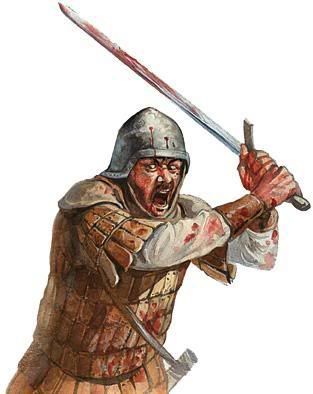


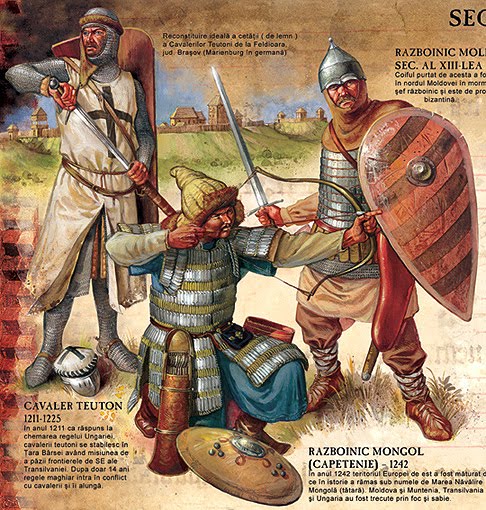
Teutonic order warrior(left), mongol warrior(center) and moldavian warrior(right)
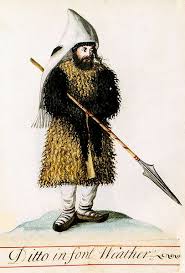
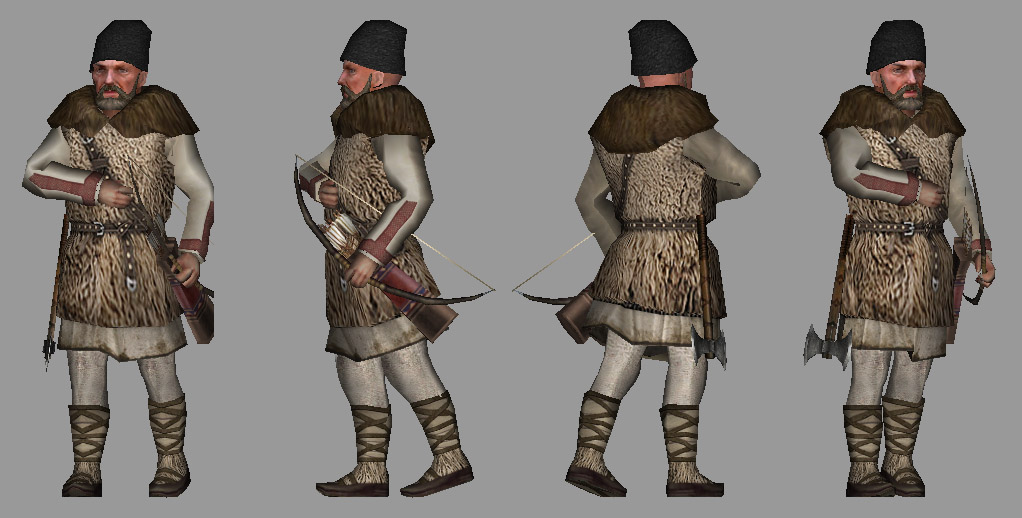
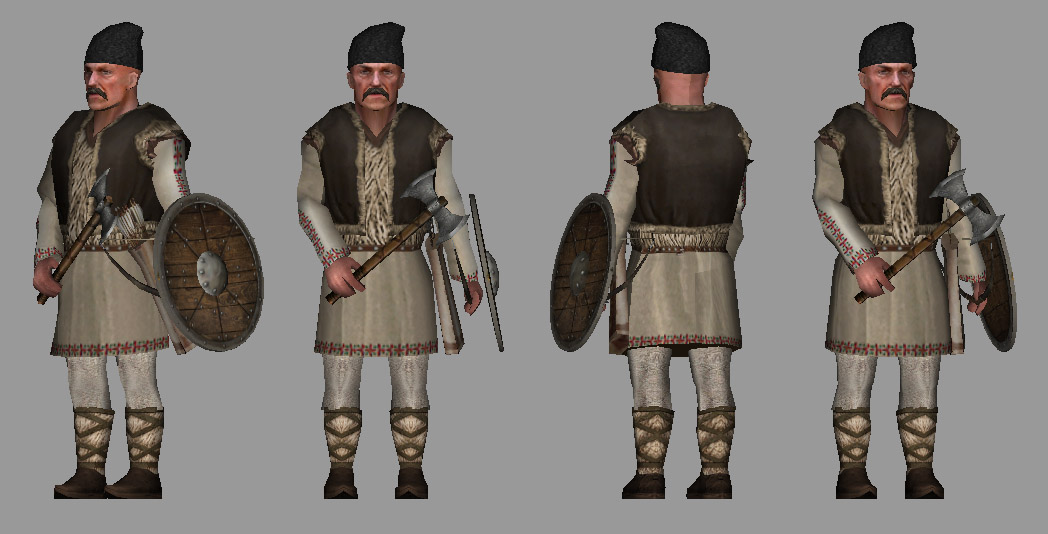
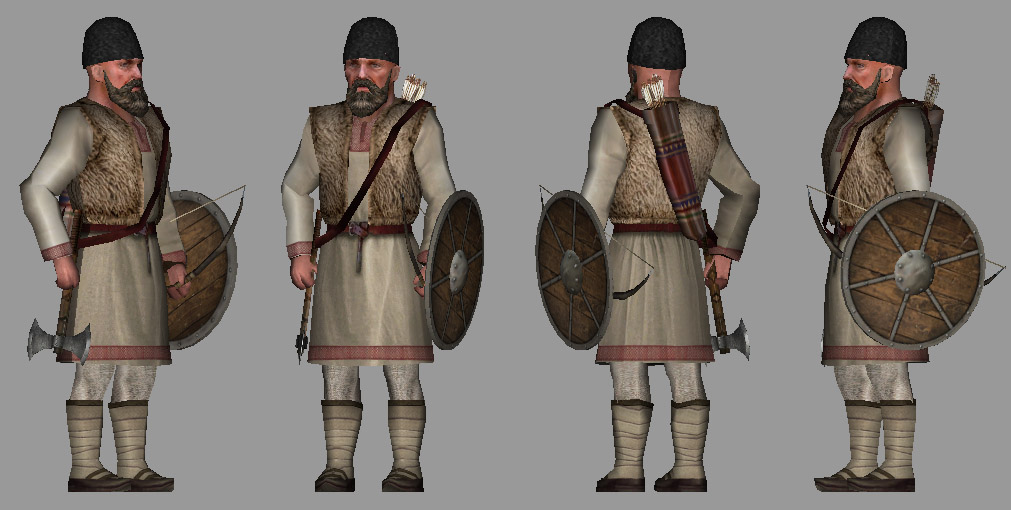
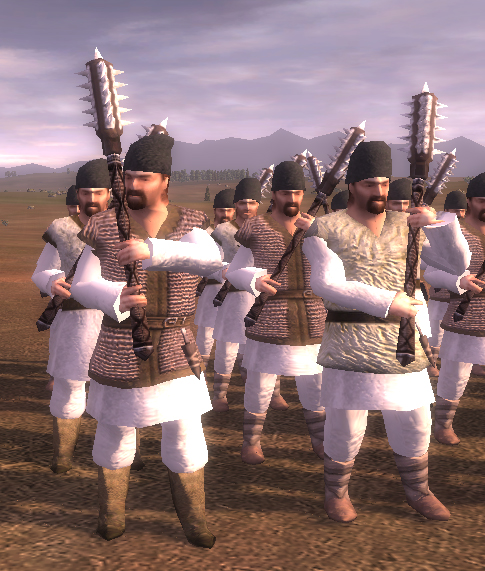

In the early 13th century A.D., the Brodniks, a possible Slavic–Vlach vassal state of Halych, were present, alongside the Vlachs, in much of the region's territory (towards 1216, the Brodniks are mentioned as in service of Suzdal). On the border between Halych and the Brodniks, in the 11th century, a Viking by the name of Rodfos was killed in the area by Vlachs who supposedly betrayed him. In 1164, the future Byzantine Emperor Andronicus I Comnenus, was taken prisoner by Vlach shepherds around the same region.

The foundation of Moldavia, often referred to as descălecat (‘dismounting’) in the Romanian historiography, is explained by a legend narrated in various old Moldavian chronicles.
The descălecat by Dragoş is dated either to 1352 or to 1359 by the chronicles.However, based on the identification of "King Vladislav of Hungary" with King Ladislaus IV the Cuman (1270–1290), the historian Pavel Parasca argues that Dragoş arrived in Moldavia in his reign. All the same, first a defensive border province began to develop which gradually included the Romanian polities that had come out of the influence of the Kingdom of Halych and the Golden Horde.
Vlach Army:





Teutonic order warrior(left), mongol warrior(center) and moldavian warrior(right)




I see two main problems here (aside from some minor inaccuracies):
1. Too late timeframe (we need things as close to 1200 as possible).
2. Almost all lords you've posted are vassals of the Hungarian king (from a later time, when the Hungarians had asserted their power in those lands - in 1200 the Wallachian plains were under Cuman control) and thus, even if they were to be included, they'd have to be made part of the Kingdom of Hungary.
So far I think those lands should be left under Cuman control (some maps give them as Bulgarian vassals, but I think Cuman dominion is more accurate) with some villages of Vlach population around the Carpathians etc (just as there are Vlach-populated villages in the mountains of the Bulgarian Tsardom).
All in all, I think your best bet for playing as a Wallachian and/or Moldovan faction would be the TsardomsTW mod for M2TW (whose screens you've posted). They recently released a Moldovan preview and video.
1. Too late timeframe (we need things as close to 1200 as possible).
2. Almost all lords you've posted are vassals of the Hungarian king (from a later time, when the Hungarians had asserted their power in those lands - in 1200 the Wallachian plains were under Cuman control) and thus, even if they were to be included, they'd have to be made part of the Kingdom of Hungary.
So far I think those lands should be left under Cuman control (some maps give them as Bulgarian vassals, but I think Cuman dominion is more accurate) with some villages of Vlach population around the Carpathians etc (just as there are Vlach-populated villages in the mountains of the Bulgarian Tsardom).
All in all, I think your best bet for playing as a Wallachian and/or Moldovan faction would be the TsardomsTW mod for M2TW (whose screens you've posted). They recently released a Moldovan preview and video.
As Korinov already posted, the Vlachs already exist as a subculture in the newest released update. I had mentioned somewhere above that some of the villages near the mountains in the Bulgarian Tsardom are made to give Vlach troops. You can check them in our Wiki.Cod said:Well, yeah, I understand... but is adding the vlachs as a subculture or something possible? Like mercenaries in the taverns?
tarabostu
Veteran

that is low...kdm said:NikeBG said:It wasn't called Cumania for no reason. Still, let's see what Cod will come up with.
Roman(ian) Empire?
tarabostu
Veteran

well you don't have a research like that for the cumans for example but you still talk about cuman 'control'NikeBG said:Make us a research for them and we'll consider adding them in! The research should include:
- What troops trees should they have, what equipment etc.?
- Which lords should they have (and their CoAs, if possible)?
- Which settlements did they control in 1200?
Wallachia was, in 1200, a no man's land under Cuman control and/or plundereignity (plunder sovereignity. I just made that up). Moldavia too.
Vlachs will be where they should be, but they will have to fight for their freedom (relative, servile, feudal freedom) and break the Cuman shackles themselves. Or with the player's aid.
Doesn't that sound exciting to Romanian ears?
Vlachs will be where they should be, but they will have to fight for their freedom (relative, servile, feudal freedom) and break the Cuman shackles themselves. Or with the player's aid.
Doesn't that sound exciting to Romanian ears?
tarabostu
Veteran

oh but of course it does!...as far as i am concerned,I can see your reticence towards inventing stories about dubious glory fantasies some of us might have, but then our place is our place and leaving that part of the map empty and neglecting all trace of previous aspirations to such a freedom before 1330 is just as false,so, any way you can make me have a trooptree and some sort of a subfaction for which i can play will mean a great deal of fun to me,definitely yey,and i promise not to conquer the world with that faction not even on my personal laptop
tarabostu said:oh but of course it does!...as far as i am concerned,I can see your reticence towards inventing stories about dubious glory fantasies some of us might have, but then our place is our place and leaving that part of the map empty and neglecting all trace of previous aspirations to such a freedom before 1330 is just as false,so, any way you can make me have a trooptree and some sort of a subfaction for which i can play will mean a great deal of fun to me,definitely yey,and i promise not to conquer the world with that faction not even on my personal laptop
It's not a matter of inventing stories or adding any Empire of Romania, it's just that we haven't gotten that far right now. Cumania has not been implemented, therefore the Cumans and the Vlach towns are not either... yet!
The Byzantine nationalists are also stirring because of their... oh, wait...
Ooh...
But we will get there eventually. It's just that, so far, the Cumans are a hard faction to do. Their texture are strange, we're probably gonna need new models... it will be a hard thing. Also, we have to balance the thing "Cuman invaders" with "Cuman settlers", and their armies should consist basically of Cumans, not subjects of them.
Not only because it's more accurate this way, also because fighting Khergits is so damn cool and thrilling that there must be something similar in E1200.
Actually, we do have a research for the Cumans. And their control over that area is pretty non-ambigious. The only question is whether those Cumans were completely independent or, as some others propose, if they were subordinated/vassalized to Tsar Kaloyan, due to his royal marriage with the Cuman princess. My position is that even if the Cumans of what would later be known as "Wallachia" were subordinated to Tsar Kaloyan, we should keep them as an independent faction, with only a direct Bulgarian control over Severin (castle) and Kralevo (village) in Oltenia (which we already have). In any case, there is absolutely *no* evidence for Vlach autonomy in those lands in 1200 and no one so far has been able to bring up such a thing (although I've given that possibility earlier in the thread). Thus, the Vlachs in those lands can be represented only as a population in the villages near the Carpathian Mountains, not as a faction of their own.tarabostu said:well you don't have a research like that for the cumans for example but you still talk about cuman 'control',further more that 'cumania' is called many things
The question remains on whether there was a sizeable Vlach nobility that we can represent. That we can represent. That we can represent.
Fight!
Fight!
Similar threads
- Replies
- 2
- Views
- 114
- Replies
- 1
- Views
- 101
- Replies
- 2
- Views
- 127










